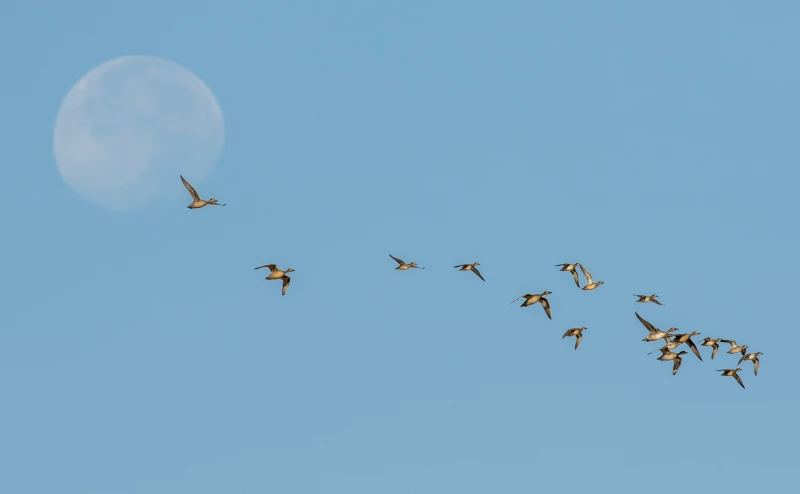By November, most of the wintering songbirds have settled into their wintering territories for the winter months. In and around our neighborhoods and small parks, Northern Flickers, Ruby-crowned Kinglets, Yellow-rumped Warblers and White-crowned Sparrows have become part of the urban and suburban winter makeup. Brewer’s Blackbirds arrive in force, joining grackles and hanging around parking lots and busy parks.
Our Empidonax flycatchers, vireos, most species of wood-warblers, orioles, grosbeaks and tanagers have long-departed for the warmer Sonoran Desert, woodlands in Mexico, or tropical areas of Central and South America. We won’t begin seeing these birds again until March, April, and May.
At our wetlands and artificial ponds and lakes, waterfowl diversity and numbers increase through the month. Redheads, Ring-necked Ducks, Buffleheads, and dabbling ducks stream in from waterbodies from the north. One can observe this movement from the bank of Clark County Wetlands Park, where birds follow the wash as they explore new foraging areas. Parks like Sunset Park and Craig Ranch Park can be great places to observe some of the ducks at close range. At Lake Mead, check 33-Hole for loons and wintering gulls, and Boulder Beach for Greater Scaup and unusual diving ducks like scoters. Scoters feed on mollusks and take advantage of the invasive Quagga Mussel population at some parts of the lake.
Geese also wander in the valley. Along with Canada Geese, search for Greater White-fronted Geese and Snow Geese at parks and athletic fields. Small numbers of Ross’s and Cackling Geese mingle at these sites with the larger geese. By the end of the month, it is not unusual for Tundra Swans to make brief visits to our watercourses.
At our more well-vegetated parks, keep an eye and ear out for other wintering species. Northern Harriers frequent the bird preserve and the wash. Hermit Thrushes and Spotted Towhees can be found anywhere with enough understory, though are a bit too shy for most urban parks. Some cultivated plants such as California Fan Palms and Russian Olives begin to produce fruit, which can lure in flickers, robins, waxwings, starlings, mockingbirds and more. Keep an eye out in your neighborhood for such plants.
November is a great month for those looking for unusual and infrequent bird species. Corn Creek at Desert National Wildlife Refuge, Floyd Lamb, and any of our large parks can lure in species such as Eastern Phoebe, Pacific Wren, Varied Thrush, Gray Catbird, American Tree Sparrow, Swamp Sparrow, Harris’s Sparrows, Golden-crowned Sparrow, and Lapland Longspur all could show up in the Las Vegas area this November. These are all hardy species that can overwinter in the region and endure the occasional freezes.
As we bird in November, we can begin scouting for our winter Christmas Bird Counts, when volunteers get out to some of our favorite or esoteric locations to census bird populations as part of a longstanding tradition.










